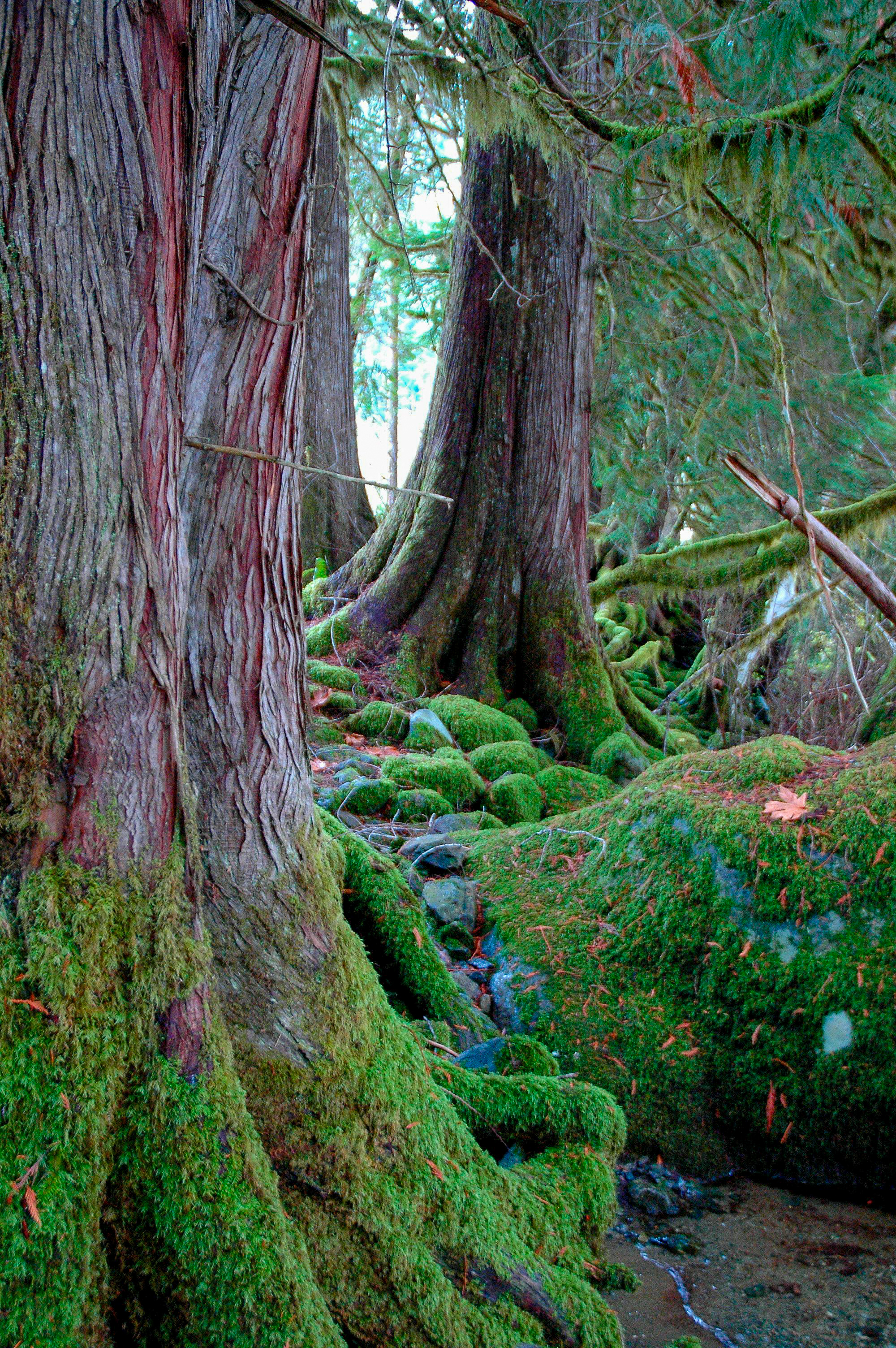BC Parks Foundation
Four Ways to Say Cedar Tree
June 6, 2024
Four Ways to Say Cedar Tree
Parks across BC are portals that connect us to our past, present, and future.
Near Nanaimo, in Petroglyph Park, images carved over 1,000 years ago by the Snuneymuxw First Nation into sandstone tell stories of potlatches, floods, and coming-of-age ceremonies.
Wagon ruts etched into Dewdney Trail in Kettle River Recreation Area portray the path traveled by gold seekers, fur traders, and settlers.
Manning Park's bird count, the longest running in BC, guides our actions toward ecosystem balance and a sustainable future.
And, in protected areas all across the province, you’ll find culturally modified cedar trees, or CMTs.
They connect us to wisdom of the past, cultural practices of the present, and a future where Indigenous knowledge and environmental stewardship go hand in hand.

Cedar trees hold immense significance for many Indigenous Peoples in BC, who approach their utilization with a profound sense of reciprocity.
Indigenous Peoples may modify cedar trees through carving, stripping bark, or shaping branches. Traditional knowledge passed down through generations teaches how to carefully select which trees to utilize and when, ensuring the sustainability of their resources for future generations.
Ancient languages often carry the essence of the land within them. With the diversity of First Nations language families in BC, here are a few ways to say cedar tree.
- In the Hul'q'umi'num language, a dialect spoken among the Coast Salish peoples of the west coast, the word for "western red cedar" is Xpey'. This tree is a provider of life and sustenance, offering its bark for clothing and blankets, and its body for shelters and canoes.
- For the Secwepemc people, a First Nation residing in the interior of BC, their word for “cedar roots” is stinestn, which are used to create baskets that store food, carry water, and cradle babies.
- In the Nuu-Chah-Nulth language spoken by fourteen First Nations who live on Vancouver Island, red cedar is called huumiis, with “huu” meaning to last over a long period of time. Cedar boughs are used in cleansing ceremonies, brushed along the body to purify and renew the spirit.
- In the ’Wùik̓ala language of the Wuikinuxv people, the red cedar tree is known as də̀ny̓as. From the sturdy trunks of these magnificent trees, the Wuikinuxv carve totem poles and ocean-going canoes.

The Ministry of Forests estimates 7,687 culturally modified tree sites exist throughout BC, with each site containing anywhere from a single CMT to thousands.
If you're fortunate enough to encounter one, take a moment to appreciate this living reflection of balance—the harmonious exchange between humans and nature that sustains and enriches both.
Forests are full of stories. Visit these Story Trails to hear student voices from Aya7Auylh Chet (Cultural Journeys - St’a7mes School) and Chase Secondary School’s Secwépemctsin language class as they share about the rich past, present, and future of the land.
Love this? For more inspiring stories about conservation wins, community efforts, and ways you can help protect nature, subscribe to our newsletter today.
Similar Stories
-
 March 25, 2025
March 25, 2025
A Forever Forest: A Community Unites to Protect the Puntledge Forest
-
 October 23, 2024
October 23, 2024
Stranger Living Things: 10 of the Spookiest Species Found in B.C.’s Parks
-
 July 9, 2021
July 9, 2021
Meet the Team
“You want to create space in your consciousness for your frequency to shine through. That’s what owning yourself is all about. It is in the stillness that these messages can make themselves known. And you needn’t look further than nature.
”